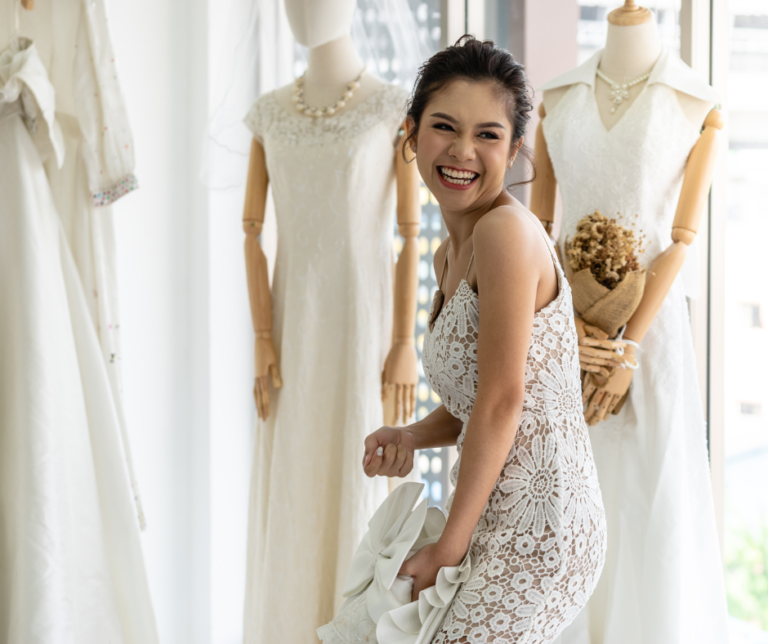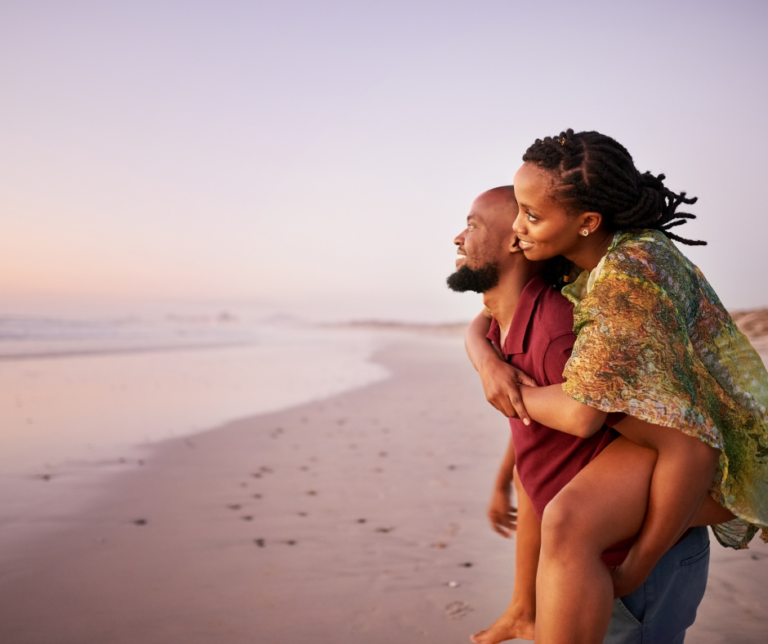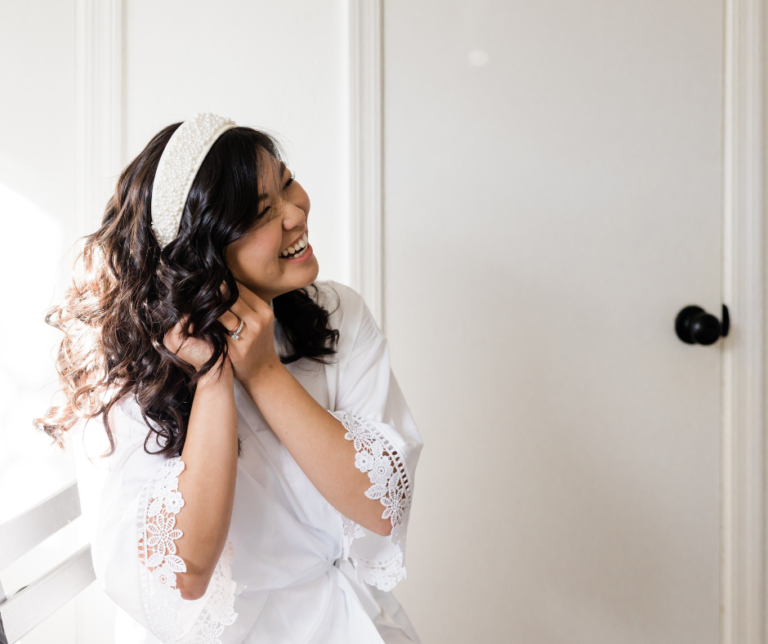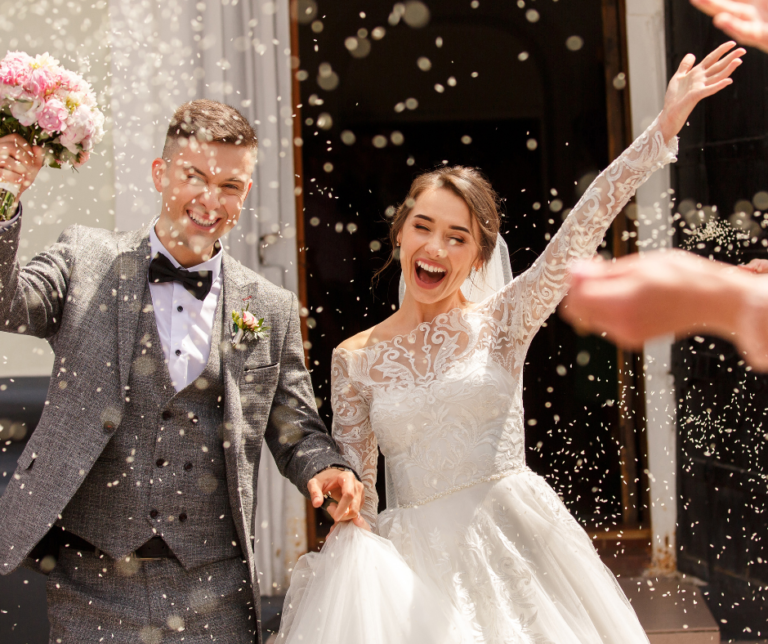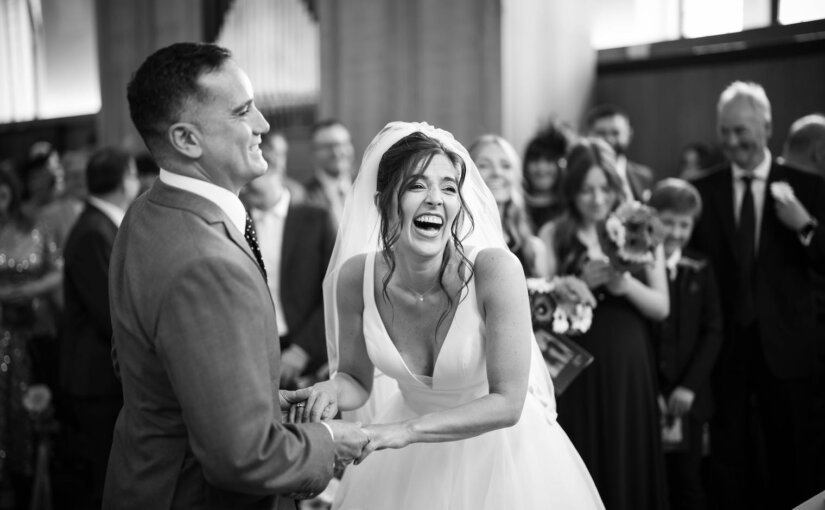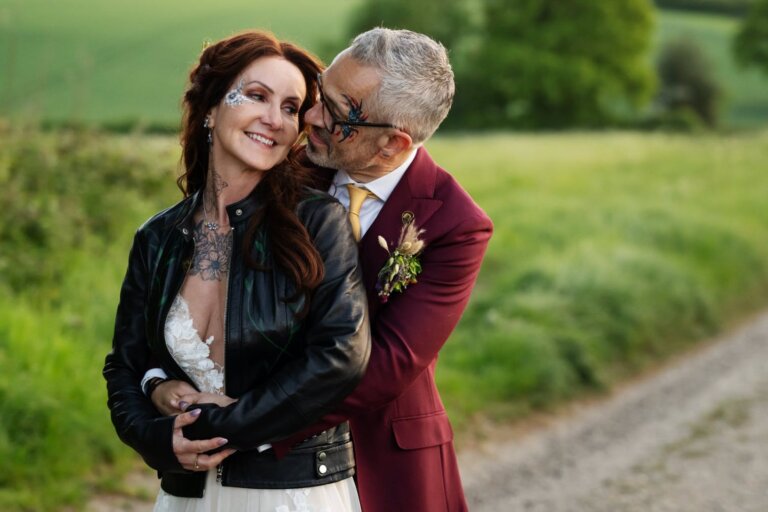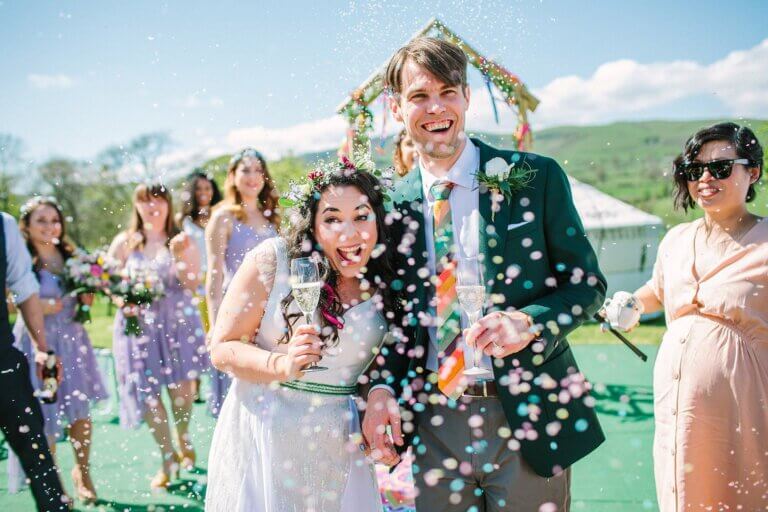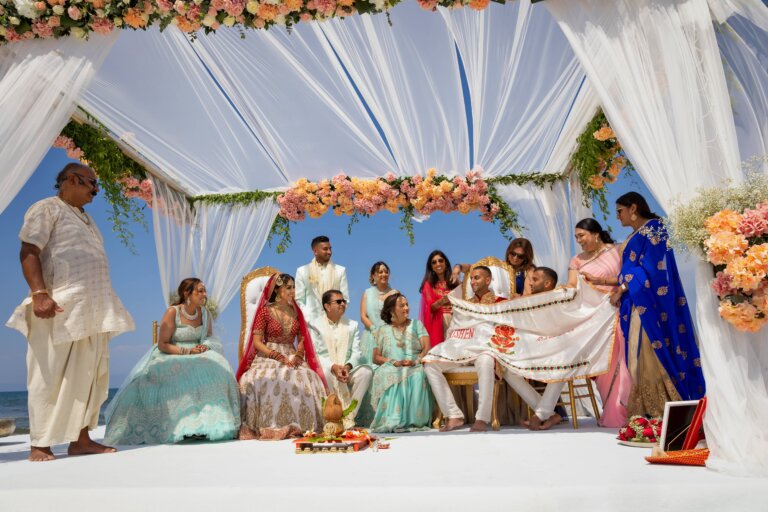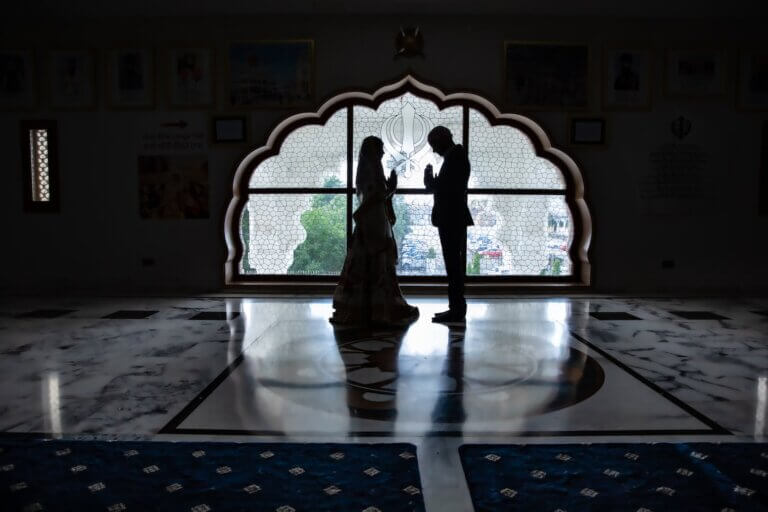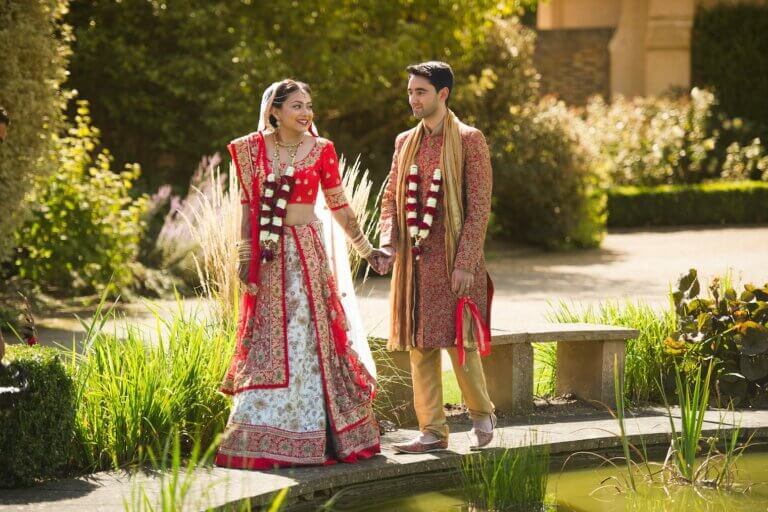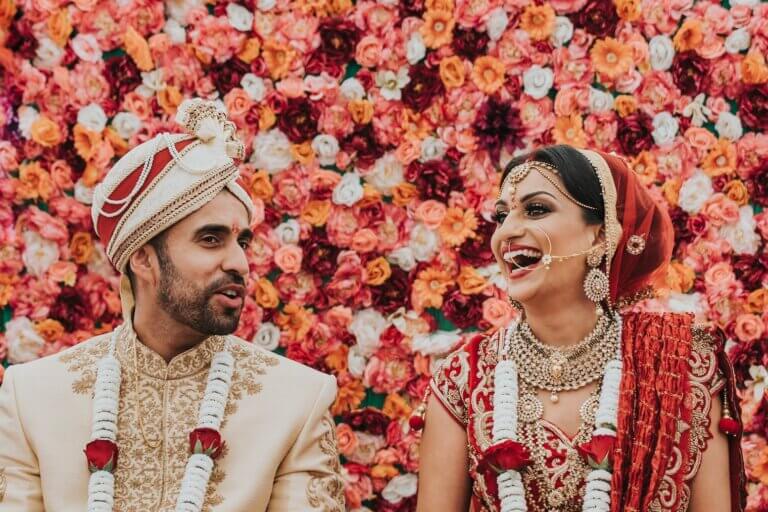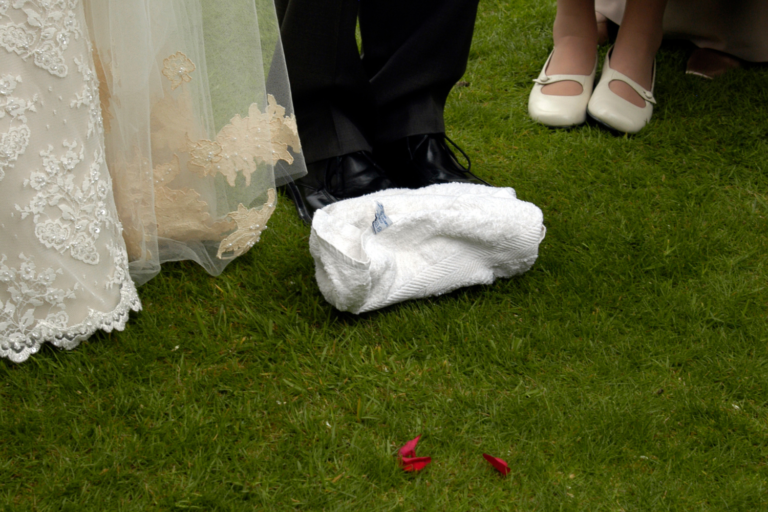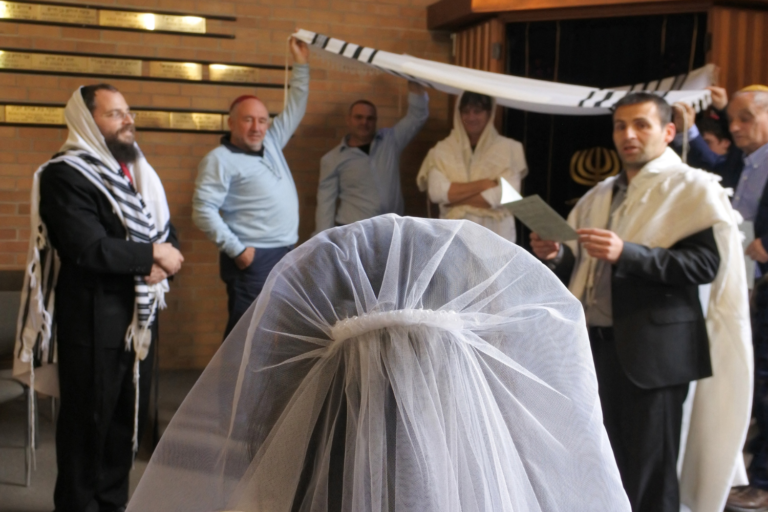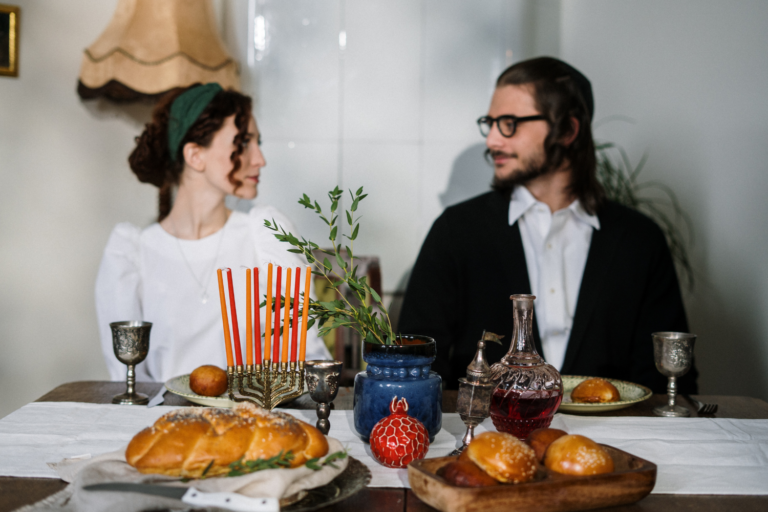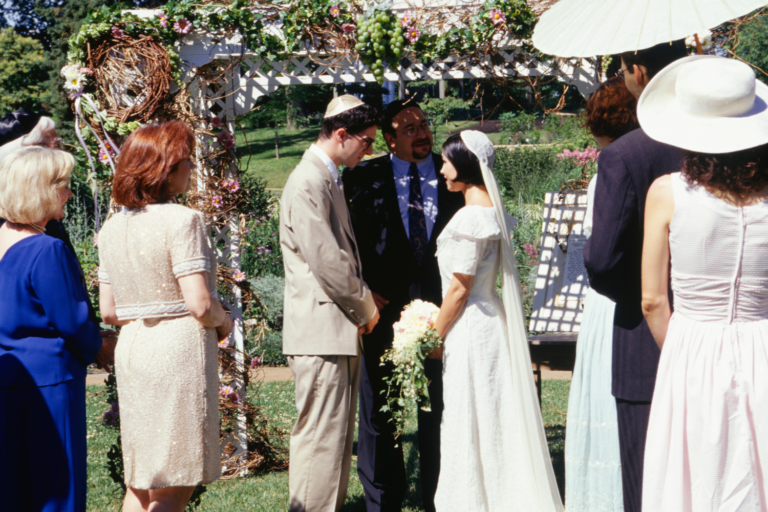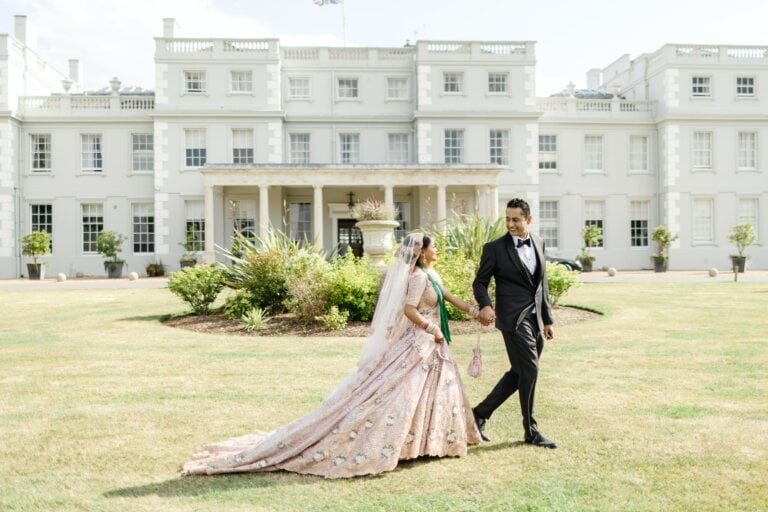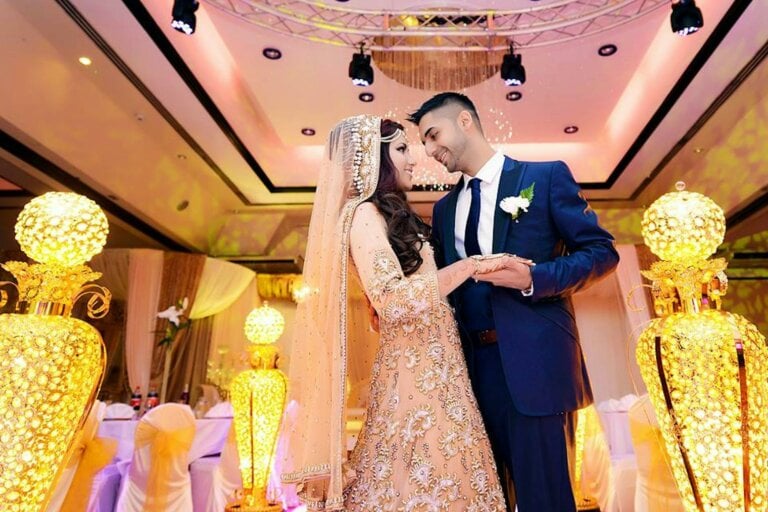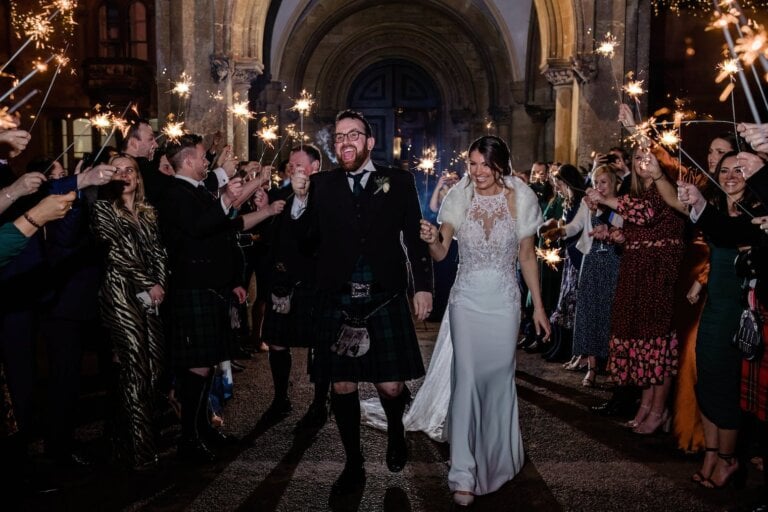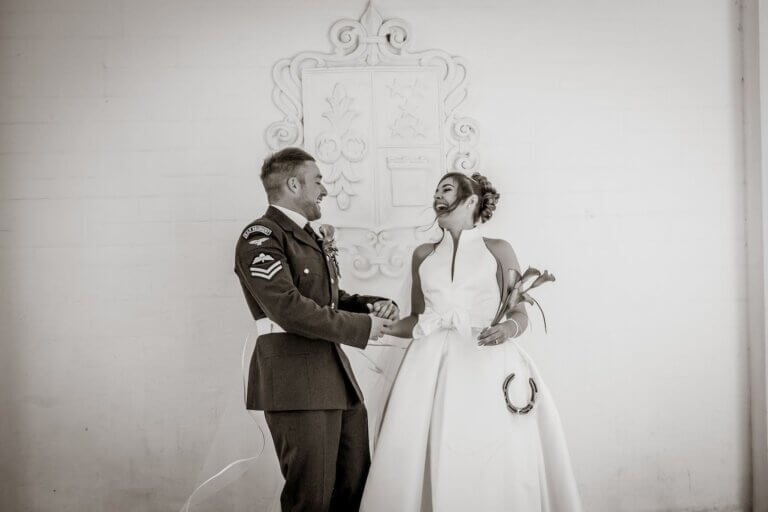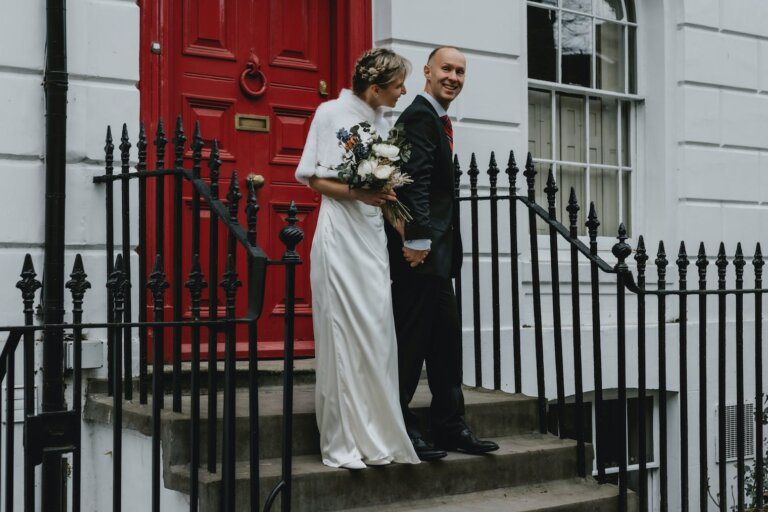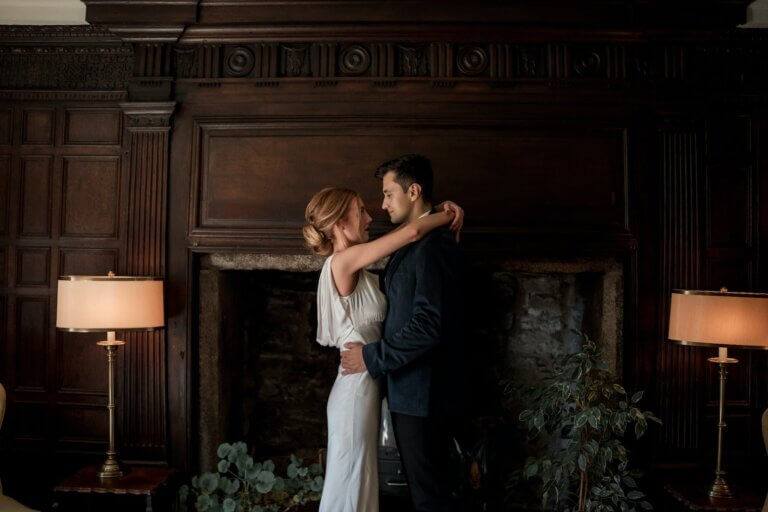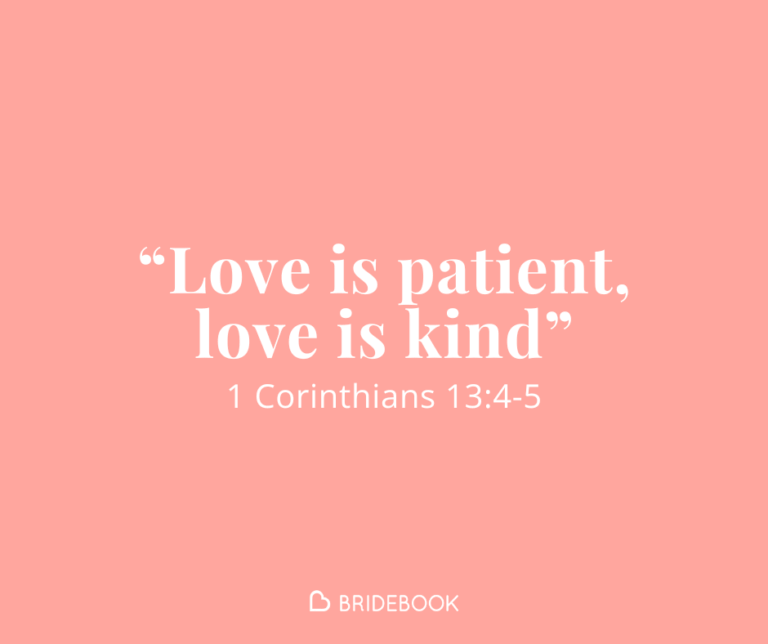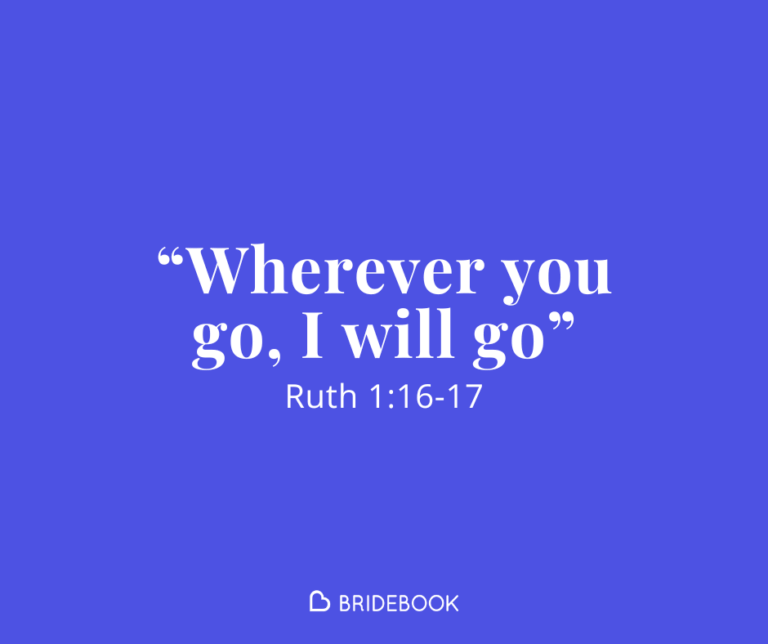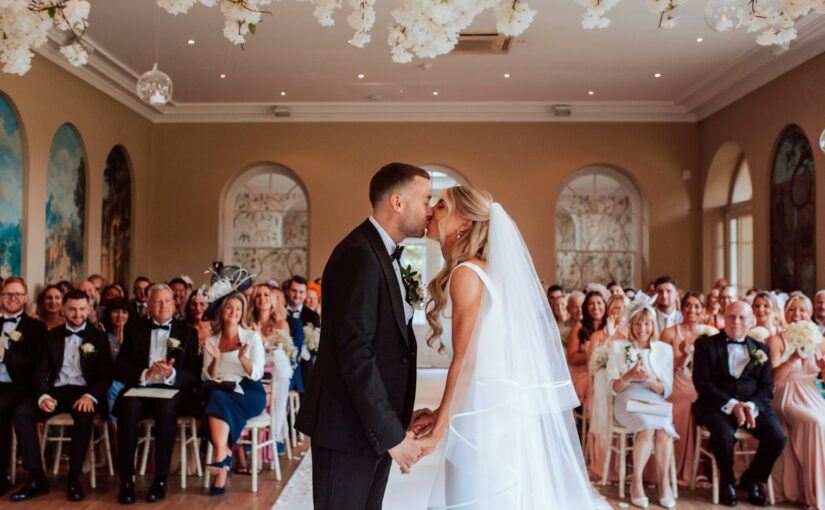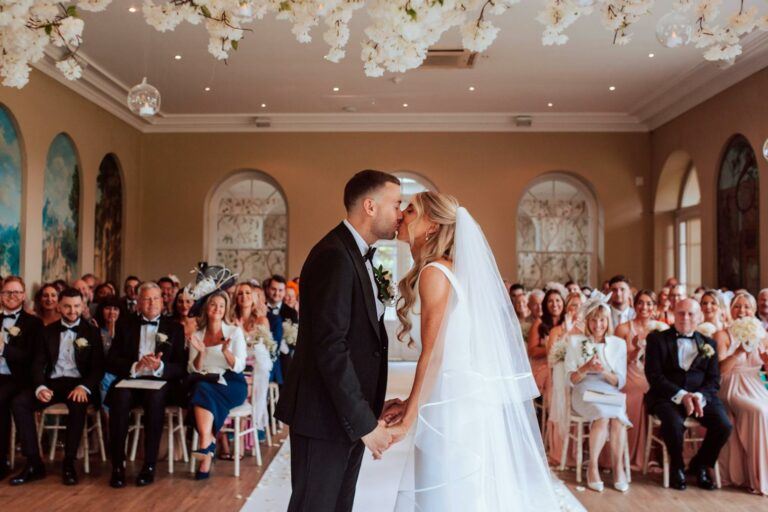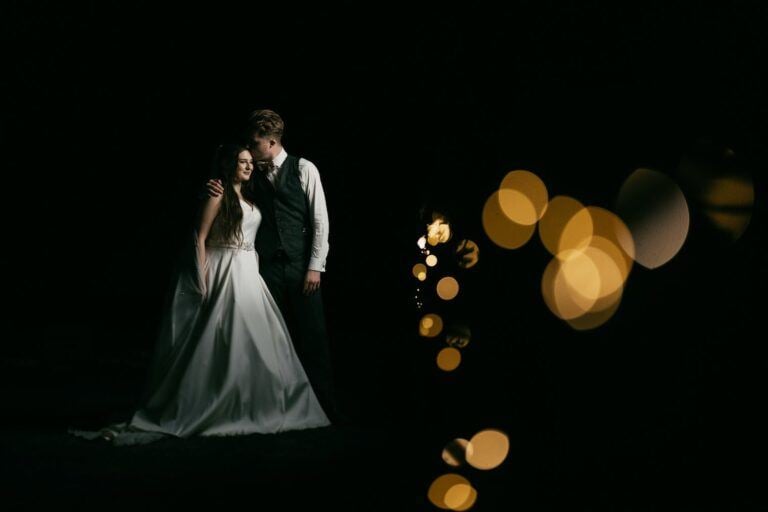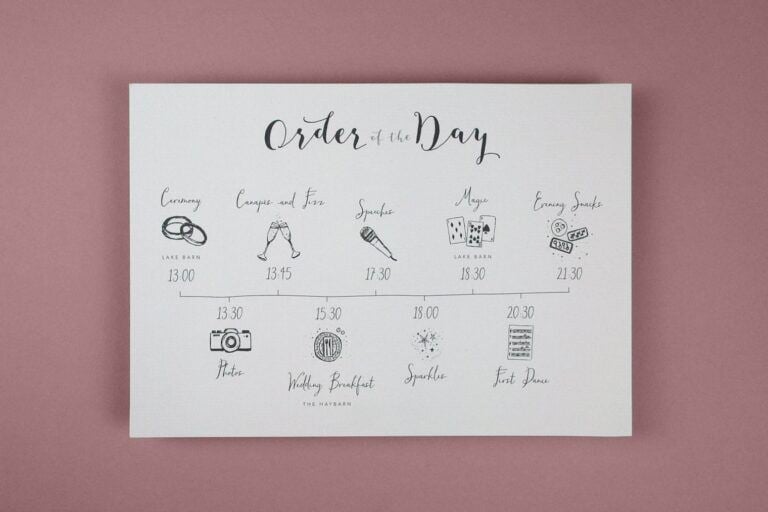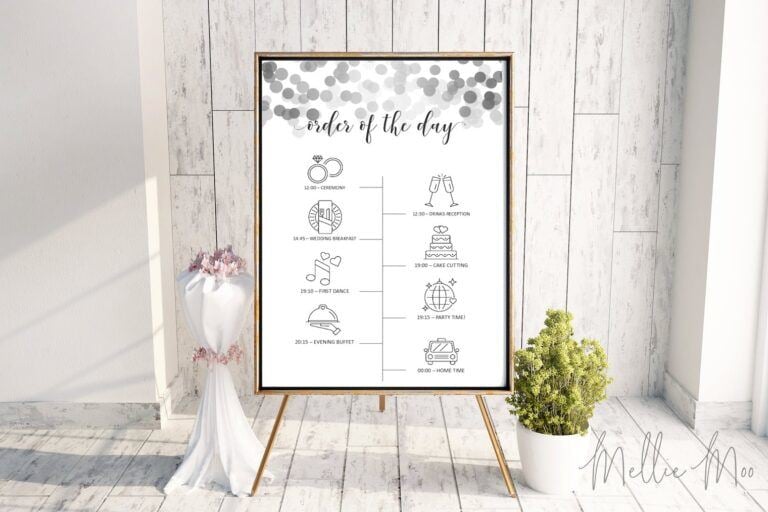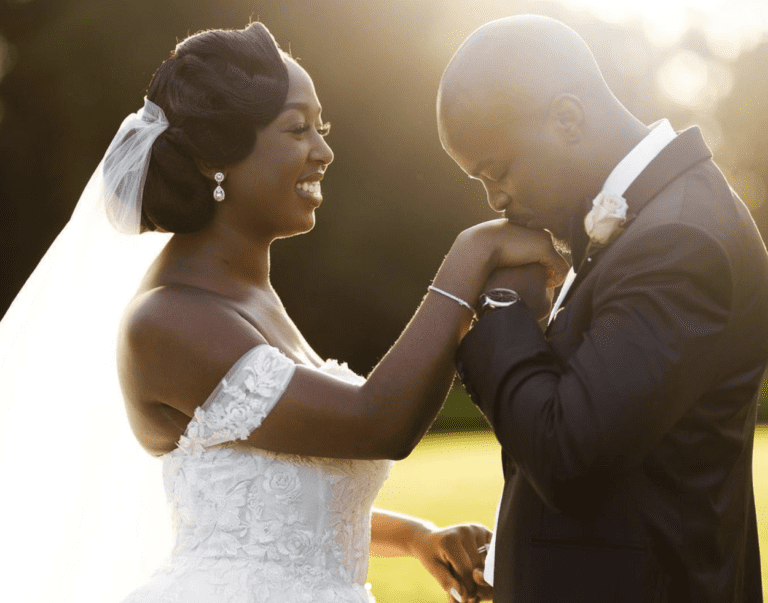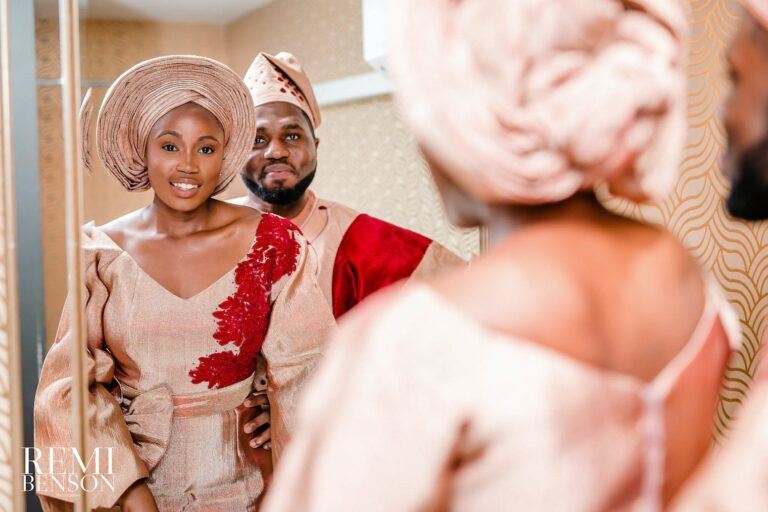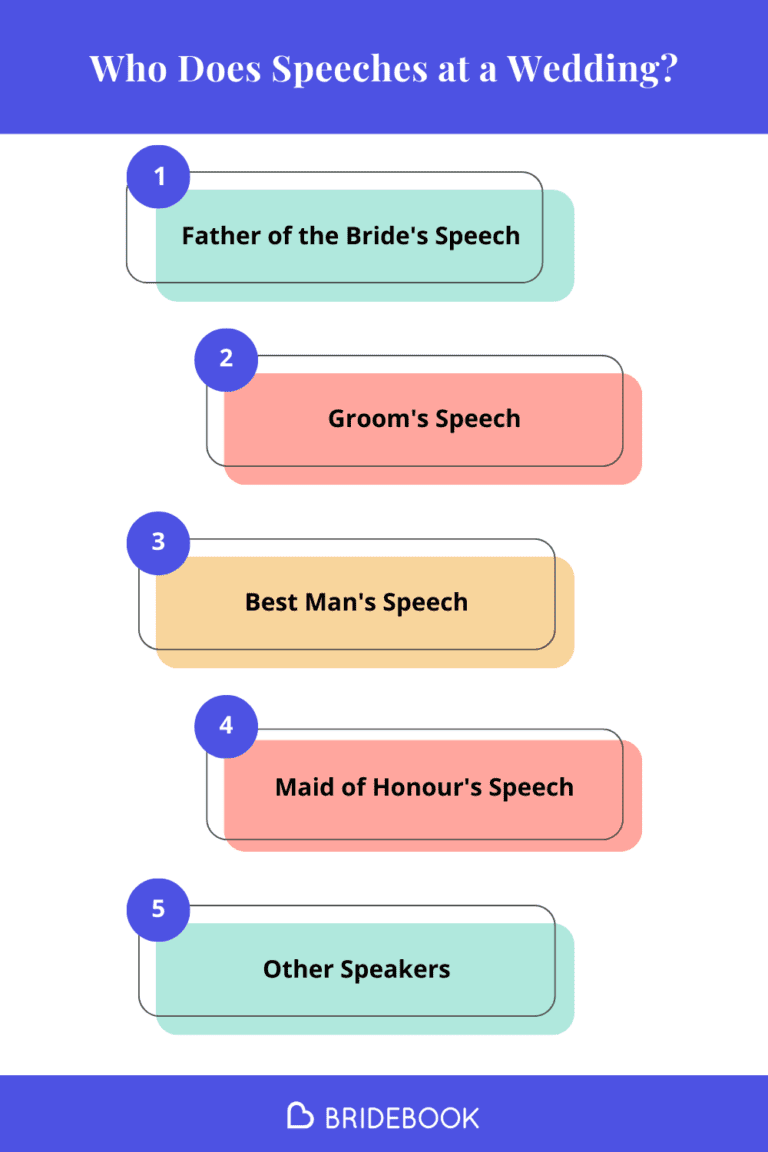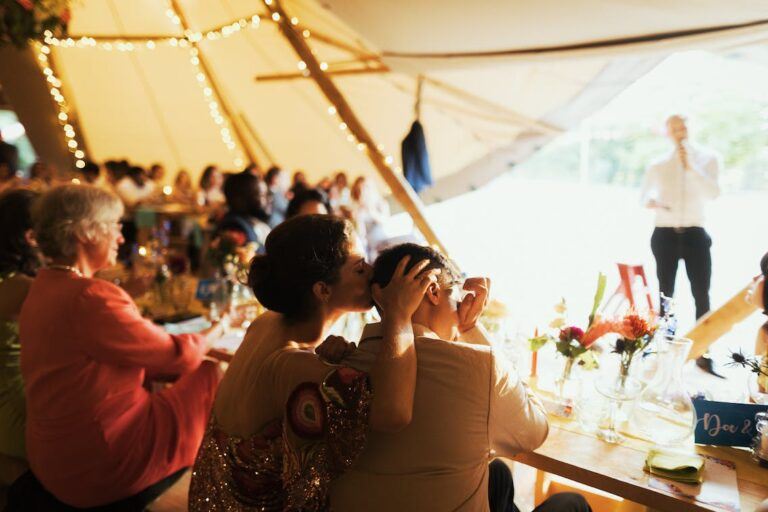Delivering your wedding vows is one of the most beautiful and intimate moments of your life. You’re stood up there with the love of your life, telling all your family and friends just how special they are to you — what could be more magical?
Writing your own wedding vows adds an extra level of meaning and personalisation to this already magical moment. It’s a chance to share your special memories, inside jokes, and the promises you intend to keep as a married couple.
If you’re here, you’re probably wondering how to write marriage vows and craft a truly memorable moment. Let us guide you through how to write personalised wedding vows and how to avoid common pitfalls, and get inspired by our examples of great wedding vows.
What are wedding vows?

Wedding vows are the promises and commitments made to your partner during your wedding ceremony. They are read aloud and usually last between 2 and 3 minutes per reader, totaling a maximum of 6 minutes.
The groom traditionally reads his vows first, followed by the bride. However, you can read the vows in whatever order you’d like. Try mixing it up for a same-gender, gender-neutral, or other non-traditional wedding service.
How do I write wedding vows?

Writing your wedding vows can be nerve-wracking. We get it — it’s a big moment, and you want to get it right. They are the promises that will shape your marriage, and understandably, you want them to be heartfelt, meaningful, and reflective of the commitment you’re making to your partner.
With all this in mind, the most important thing is that you speak from the heart. Don’t be afraid to share a special story, a personal moment, or a quirky detail that showcases your love. Let’s delve a little deeper into the steps you should take when writing your wedding vows.
Step 1 – Brainstorm your ideas
The first step is to brainstorm. Grab a cup of tea, sit down together, and let the nostalgia flow. Try making a spider diagram of your favourite memories, inside jokes, and quirks that define your relationship. Think about the moments that made you laugh uncontrollably or the challenges you conquered side by side. These will make the perfect base for your wedding vows.
Step 2 – Draw on inspirations
If you’re feeling stuck or want your vows to be more traditional, consider drawing on inspiration from classic films, your favourite books or, if you’re religious, from the Bible. Quotes from these sources can give you a good jumping-off point and set the tone for your wedding vows. For example, For something poetic and beautiful, look to quotes from your favourite novel. If you’re aiming for heartwarming and timeless, try turning to your favourite romantic film. For something traditional, try a Bible verse.
Step 3 – Consider the structure
The next step is to consider the structure of your vows. Like any good story, your vows should have a beginning, a middle, and an end. Having these three distinct sections to your vows will enhance the structure and help you feel more confident.
The beginning of your vows should consist of special memories and anecdotes from your relationship, or even a reflection on the day so far. The middle should then consist of the traits that make your relationships so special, and the end should include the promises you are making to your new spouse.
Step 4 – Write your vows
Once you’ve planned and prepped what you want to say, it’s time to put pen to paper and actually write your vows. Writing your vows can be difficult. However, bear in mind this is only the first draft, and the most important part of a first draft is that it exists. It doesn’t need to be poetic or magical — this comes with the edits. Instead, write down all the thoughts, feelings, and promises that come to mind. You can refine it at a later stage.
Take regular breaks, keep coming back to your inspirations, and don’t be too hard on yourself.
Step 5 – Edit and refine
Once written, take a break from your vows. Spend a few days (or even a week!) not thinking about them. This will help you come back to them with a fresh mind and a new perspective.
Once this time has passed, you can start editing. Cut any superfluous words and refine your ideas. This is your chance to polish your words and make them resonate even more profoundly.
You may need to edit your vows a few times before you’re happy with them. This doesn’t mean they’re bad — it just means you’re committed to making them the absolute best reflection of your feelings. Editing is a natural part of the creative process, and your vows deserve the time and attention to make them the best that they can be.
Step 6 – Practise makes perfect
Once you’re happy with the structure and content of your vows, it’s time to practise, practise, practise. Read your vows to a trusted friend, in the mirror, and even record yourself speaking them for review later.
Take any feedback you’re given. Feedback can help you refine your delivery and ensure that your words land as you intended.
Suggested wedding vow structure

Every good love story should have a beginning, a middle, and an eventual end. We recommend this is the structure you use with your wedding vows.
The beginning
The beginning should highlight any special memories or anecdotes you share with your partner. Why not start at the very beginning with the story of how you met? Was it love at first sight, friends to lovers, or something different? Take your guests on the journey of the special moment you met and describe how you felt after your first date. Your guests will love it, as will your partner.
The middle
The body of your vows should include what makes your relationship so special. For example, the traits you value in your partner, what makes them unique, and how much you appreciate them. Don’t be afraid to lay it on thick — that’s what vows are for, after all!
The end
The end of your vows should include the specific promises you are making to your new spouse. Traditional vows promise to love, honour, and obey in sickness and in health. However, this may not feel appropriate for you.
Instead, you could promise to grow in faith with one another, or to support them through life’s twists and turns. You could promise to love them in spite of their bed-head, through heck and high water, or to be their unwavering partner in crime.
The beauty of hand-written vows is they can be as unique as your relationship. Feel free to take creative liberties and make promises that will speak to you and your partner.
Common challenges for writing your own wedding vows

We know writing your wedding vows can be tricky. Check out our handy solutions to a few common problems.
How to start wedding vows
There are a few ways you can start your wedding vows. We recommend:
- Your partner’s name. Starting with your partner’s name or ‘My love” is a simple but effective start.
- A short quote. Using a short quote from a shared favourite song, poem, or book is another great way to open your vows. It will set the tone for the vows and connect your promises to something meaningful that you both love.
- A declaration. Starting with a declaration like “This is the best day of my life”, or “I feel like the luckiest person in the world to be stood up here with you” will capture the significance of the moment and set the tone for the vows that follow.
When to write wedding vows
We recommend starting your wedding vows around two weeks before the big day. This way, you leave long enough for writing, revisions, and practising without feeling rushed or stressed.
How to write personal vows
If your vows are feeling a little generic or lacking a personal touch, try using the following techniques:
- Use inside jokes. All couples have special inside jokes. Sometimes, all it takes is a word or a glance to have you both in hysterics. Try using that word or turn of phrase in your vows. It will create a moment of intimacy between you and your partner which everyone will be able to see.
- Use song lyrics. If you have a special song or lyrics that hold sentimental value to you both, consider incorporating those into your vows. If the song is especially meaningful, for example, it’s going to be your first dance, you could use these lyrics as inspiration for the body of the vows.
- Make it about your partner. If you’re really stuck, focusing the vows on your partner is always a winner. Explain how special they are to you, how grateful you are that they’re in your life, and the adventures you’ve shared together.
Inspiration for writing your own wedding vows

If you’re feeling stuck, check out our articles on inspiring quotes, poems, or Bible verses.
100+ inspiring love quotes
You can find love quotes in film, TV, literature, music, and more. You’re sure to find something that fits the bill with our list of over 100 inspiring love quotes.
15 romantic love poems
If you’re struggling to write your own wedding vows, consider using a love poem to express how you feel. Check out our article featuring 15 romantic and inspiring love poems for some guidance!
25 Bible verses for a religious ceremony
Using Bible verses in your wedding vows is a great way to inject traditional values and timeless love into your ceremony. You’re sure to find something that resonates in our list of 25 best Bible readings for your wedding ceremony.
Top examples of great wedding vows
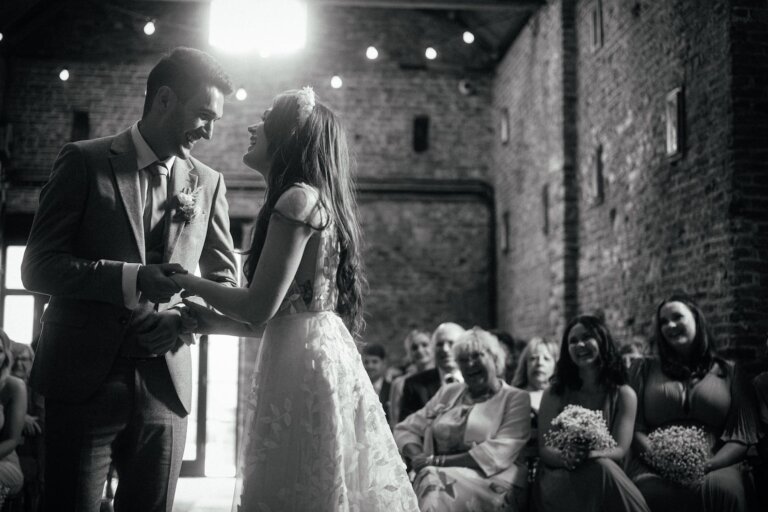
Beginning with your unique love story: “From the moment I first laid eyes on you, I knew my life was about to change in the most incredible way. Our story began with a glance, turned into laughter, and unfolded into a beautiful journey of love. Today, in front of our loved ones, I promise to cherish every chapter of our tale, knowing that with you, each page is more enchanting than the last.”
Embracing quirks and imperfections: “To my partner in crime, my fellow adventurer, and the one who loves me even on my ‘bed-head’ days, I stand before you with all my quirks and imperfections. I promise to cherish the laughter in our kitchen dance parties and to be the instigator of countless more. Through every twist and turn, I vow to love you, not just for richer or poorer, but for the unique, wonderful soul that you are.”
Drawing inspiration from a shared song: “As we stand here today, I am reminded of the melody that became the soundtrack of our love. Just as our favourite song plays on, I promise to dance through life with you, finding joy in every note. Together, we’ll create a symphony of love that echoes through the years, always in tune, always harmonious.”
Incorporating your shared experiences: “In the tapestry of our journey, there are threads woven with shared experiences, challenges conquered side by side, and moments that defined ‘us.’ I promise to honour our unique connection, to appreciate the traits that make you extraordinary, and to celebrate the love that has grown stronger with every step we’ve taken together.”
Weaving in humour and inside jokes: “My love, if life is a grand comedy, then you are my favourite punchline. In the laughter we’ve shared and the inside jokes that only we understand, I find the heartbeat of our relationship. Today, I vow to keep the humour alive, to find joy in the simple moments, and to be the reason behind that twinkle in your eye.”
Focusing on shared faith: “In the journey of life, I promise to walk hand in hand with you, growing in faith and love. Through every sunrise and sunset, I commit to being your unwavering partner, finding strength in our shared beliefs, and embracing the divine love that brought us together.”
Expressing gratitude and appreciation: “You are my greatest gift, my partner in adventure, and the one who has turned ordinary moments into extraordinary memories. Today, I express my gratitude for the love you’ve poured into my life. I promise to be your constant supporter, your confidant, and your biggest fan in all the adventures yet to come.”
Reflecting your journey together: “From the first date that set our hearts racing to the challenges that made us stronger, our journey together has been nothing short of magical. Today, I stand before you, grateful for every step we’ve taken. I promise to continue growing with you, facing life’s twists and turns, and savouring the beauty of a love that has stood the test of time.”
Making specific, personal promises: “I promise to be the one who makes your morning tea, a cup filled not just with warmth but with love. I vow to be your partner in our kitchen dance parties, initiating joy with every beat. Through every sunrise and sunset, through sickness and health, I pledge to be the constant in your life, your anchor in the storms, and your unwavering source of love.”
Ending with a declaration of love: “In this moment, surrounded by the ones we hold dear, I declare that this is the best day of my life. I feel like the luckiest person in the world to stand here with you. Today, I promise to cherish, to adore, and to love you through all the days of our lives, for you are my heart, my love, and my forever.”
Top tips for writing your own wedding vows

Check out our top tips for how to write marriage vows.
Start early
Writing your own wedding vows can be tricky. It’s important you leave enough time for writing, editing, and practising. We recommend allowing at least two weeks. However, if you’re a bit of a perfectionist or you struggle with your words, you may want to leave even longer.
Make your vows personal to you
The most important thing about your wedding vows is that they speak to your unique love story. Even the most beautifully written vows don’t mean anything if they aren’t personal to you and your partner.
Consider what makes your relationship special. Reflect on the inside jokes, shared experiences, and challenges you’ve shared over the years. Weaving these moments throughout your vows will add a personal touch and show your partner how much they mean to you.
Be specific
There’s nothing worse than a woolly vow. Be specific in your promises. If you promise to make your new spouse a cup of tea every morning — say that. If you’re promising to be the instigator of every Friday night kitchen dance party —say that. If you’re promising to love them even when they’re old and grey, or even the classic for richer or for poorer — say that. The specificity will add depth to your vows and make you sound confident in your decision to marry your partner.
Practise makes perfect
As with wedding speeches, practise always makes perfect. Practise reading your vows in the mirror or to a trusted friend. Take any feedback on board to help you refine your delivery and boost your confidence.
The bottom line on writing your own wedding vows

Writing your own wedding vows can be a challenge, especially if you’re not sure where to begin or how to put your feelings into words. However, it’s a challenge worth facing.
Reciting your wedding vows is one of the most memorable moments of your life. Our top tips are to be specific about your promises, leave plenty of time for revisions and practise, and focus on including inside jokes and special memories. This will help keep your guests engaged and show your partner exactly how much they mean to you on your big day.
Once you’ve nailed your wedding vows, it’s time to move on to writing your wedding speech. Check out our post on wedding speech examples to help you craft the perfect wedding speech.
FAQs on writing personalised wedding vows

Can you say your own vows in a Catholic wedding?
Catholic wedding ceremonies usually ask that the bride and groom stick to traditional wedding vows. However, depending on how liberal your priest is, you may be able to change the wording of a few lines. Hey, there’s no harm in asking, right?
Can you say your own vows in a church wedding?
Yes, you can say your own vows in a church wedding. It’s a good idea to run them past your celebrant or priest first to make sure they’re in line with the traditions and guidelines of the church.
What are the 3 promises of marriage?
For grooms, the 3 promises of marriage are to “love, cherish, and worship” their wife in traditional wedding ceremonies. Brides must promise to “love, cherish, and obey” their husbands.
You Might Also Like…
- Introduction: Writing Personalised Wedding Vows
- How Long Should Wedding Vows Be?
- 15 Romantic and Inspiring Love Poems for Your Wedding Ceremony
- 100+ Inspiring Love Quotes for Your Wedding Day


















